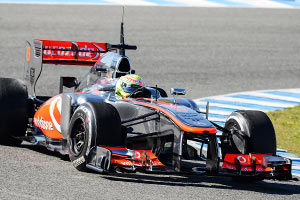Pup wrote: So does that mean that the car would better damp the porpoising if the suspension were softer? Or would the car still bounce on the tires?
Good question, its not immediately obvious to me. I think DaveW could answer this with some experience. My intuition would say yes it would help the damping. Mainly because you have a system with two elasticites in series (spring and tyre). As one of them increases in stiffness to the point of it being rigid, it mathematically starts becoming irrelevant to the overall response.
So in this case, the suspension is supposedly becoming rigid and that leaves a pretty underdamped tyre to control everything. I believe the tuned mass damper of Renault was primarily designed to better control these tyre oscillations.
The suspension damper has an effect on the "wheel hop" damping but its small and kind of a second order effect. The damper rates are chosen mainly to control the body and that usually leaves the wheel hop mode quite underdamped. If you increase the damping to better control the wheel hop, then you overdamp your body motions.
Anyway, to be honest I haven't been watching closely enough to see the porposing (you mean pitch oscillations?). If you could post a video it would help understand. If its a fast oscillation say 20-50Hz then its likely that its bouncing on the tyres.
Anyway, thats my take on it. I'm not a master on the frequency domain (unlike my anti dive skills!), so maybe someone will point out some flaws but I think basically what I'm saying is reasonably solid.



